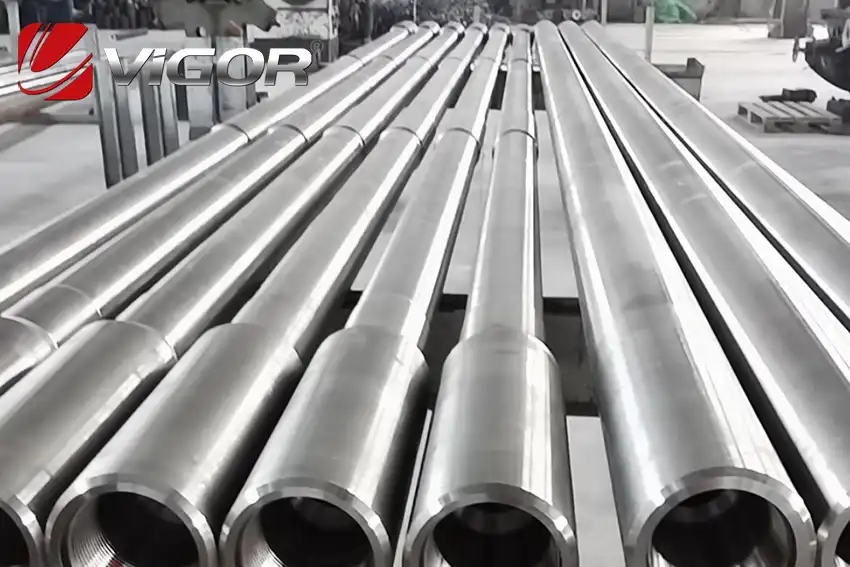
Knowledge
Weak-magnetic Stainless Steel Motor Shafts and Non-magnetic Stainless Steel Motor Shafts
Weak-magnetic stainless steel motor shafts and non-magnetic stainless steel motor shafts are critical components in the motor industry, each offering distinct characteristics that cater to specific applications. Their importance in modern industrial and technological advancements cannot be overstated.
Weak-Magnetic Stainless Steel Motor Shafts
Weak-magnetic stainless steel motor shafts are primarily composed of austenitic stainless steel and other materials with low magnetic permeability. This composition ensures that these shafts retain the inherent advantages of stainless steel, such as corrosion resistance and high strength, while also exhibiting weak magnetic properties. The minimal magnetism of these shafts is particularly advantageous in environments where magnetic interference must be minimized. For instance, in medical equipment and precision instruments, where stringent magnetic field requirements exist, weak-magnetic stainless steel motor shafts can significantly reduce electromagnetic interference (EMI), thereby ensuring the accurate operation and reliable performance of electronic devices.
Moreover, weak-magnetic stainless steel motor shafts possess excellent wear resistance and fatigue performance. These attributes enable them to withstand high-intensity and high-load working conditions without compromising on performance. Consequently, they contribute to extending the service life of motors, reducing maintenance costs, and enhancing overall operational efficiency. Additionally, their superior machinability allows for efficient manufacturing processes, enabling the production of complex geometries and designs that meet diverse application needs.
Non-Magnetic Stainless Steel Motor Shafts
Non-magnetic stainless steel motor shafts are constructed from non-magnetic stainless steel for both the inner and outer rings of the bearing, along with non-magnetic rolling elements and retainers. This design ensures that the entire motor shaft remains completely non-magnetic. Such a configuration is crucial in applications where even the slightest magnetic influence could disrupt operations or compromise accuracy.
One of the standout features of non-magnetic stainless steel motor shafts is their exceptional corrosion resistance. They do not rust easily and can function effectively in harsh environments without degradation in performance. This durability makes them ideal for long-term use in challenging conditions. Furthermore, their high level of hygiene and cleanliness is particularly beneficial in industries like food processing and medical equipment, where maintaining a sterile environment is paramount. The non-corrosive nature of these shafts ensures that they remain clean and safe for use in sensitive applications.
In addition to their hygienic properties, non-magnetic stainless steel motor shafts exhibit excellent heat resistance, allowing them to operate stably in high-temperature environments. This characteristic is vital for equipment used in industries such as cryogenic engineering, where superconducting magnets require stable and reliable components. The non-magnetic nature of these shafts also makes them suitable for advanced medical devices like nuclear magnetic resonance (NMR) imaging equipment, where precise measurements and minimal magnetic interference are essential. Other applications include precision measurement equipment in optical instruments, key transmission components in high-speed machine tools and motors, and precision transmission systems in printing machinery.
Applications and Significance
Both weak-magnetic and non-magnetic stainless steel motor shafts play indispensable roles in various sectors due to their unique properties and broad range of applications. They enhance equipment performance, extend service life, and meet specific environmental and precision requirements. In selecting the appropriate motor shaft, it is crucial to consider the specific demands of the application scenario. Factors such as magnetic sensitivity, environmental conditions, and required precision should all be taken into account to ensure optimal performance.
For example, in medical devices, non-magnetic stainless steel motor shafts are preferred for NMR imaging equipment due to their complete non-magnetic properties, which prevent any interference with the imaging process. On the other hand, weak-magnetic stainless steel motor shafts may be more suitable for general medical equipment where some magnetic presence is acceptable but still needs to be minimized.
Ultimately, through careful selection and application, these two types of motor shafts provide robust support for the development of modern industry and technology. Their versatility and reliability make them essential components in a wide array of high-performance applications, contributing significantly to advancements in various fields.
Welcome to contact us for more detailed information, please feel free to contact us at info@castings-forgings or call us at 0086 81127932




